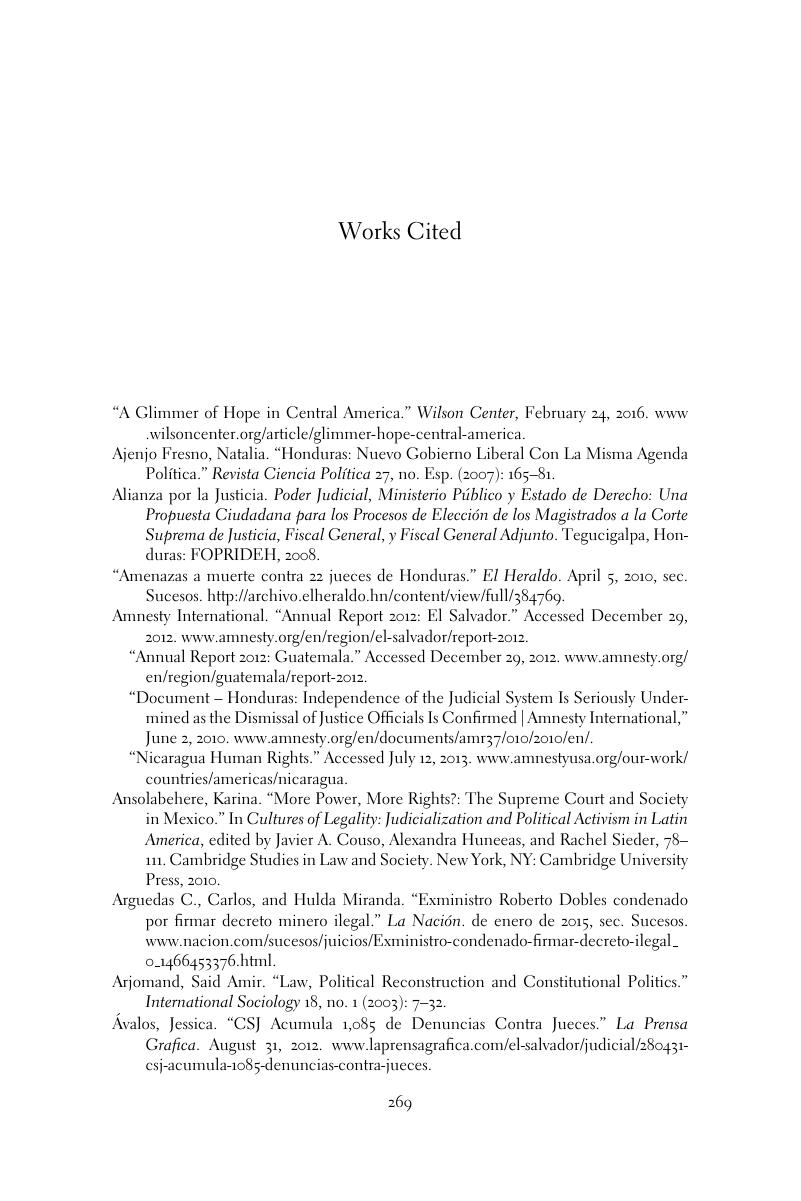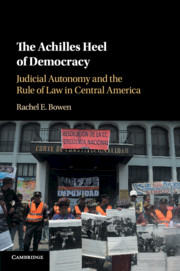Book contents
- The Achilles Heel of Democracy
- The Achilles Heel of Democracy
- Copyright page
- Contents
- Tables
- Figures
- Acknowledgments
- 1 Societally Penetrated Judiciaries and the Democratic Rule of Law
- 2 The Evolution of Judicial Regimes
- 3 Costa Rica
- 4 Government Control Regimes in Central America versus the Rule of Law
- 5 Clandestine Control in Guatemala
- 6 Partisan Systems
- Conclusion
- Book part
- Works Cited
- Index
- References
Works Cited
Published online by Cambridge University Press: 22 June 2017
- The Achilles Heel of Democracy
- The Achilles Heel of Democracy
- Copyright page
- Contents
- Tables
- Figures
- Acknowledgments
- 1 Societally Penetrated Judiciaries and the Democratic Rule of Law
- 2 The Evolution of Judicial Regimes
- 3 Costa Rica
- 4 Government Control Regimes in Central America versus the Rule of Law
- 5 Clandestine Control in Guatemala
- 6 Partisan Systems
- Conclusion
- Book part
- Works Cited
- Index
- References
Summary

- Type
- Chapter
- Information
- The Achilles Heel of DemocracyJudicial Autonomy and the Rule of Law in Central America, pp. 269 - 286Publisher: Cambridge University PressPrint publication year: 2017



